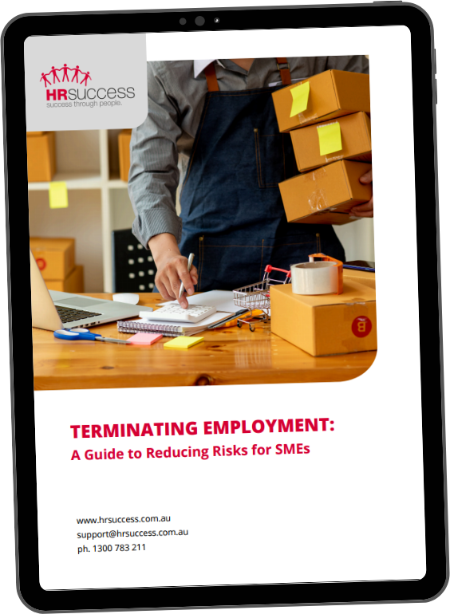As part of the Government’s “Closing the Loopholes” legislation, there are a number of changes looming in relation to Independent Contractors that employers need to understand and comply with. The latest changes are effective from August 26, 2024.
Here’s an overview of what’s changing and what you need to do to prepare.
What Are the Changes?
The new legislation introduces:
A New Definition of ‘Employee’ and ‘Employer’:
From August 26, 2024, a new definition will be added to the Fair Work Act to help determine whether a worker is an employee or an independent contractor. This new definition emphasises the real substance, practical reality, and true nature of the working relationship, beyond just the written terms of a contract (whereas the current legislation tends to emphasise the terms of the contract).
Note also that the new definition will not affect the meaning of ‘employee’ and ‘employer’ in other relevant legislation as it relates to, for example:
- tax
- superannuation
- workers compensation.
Determining Status: Contractor or Employee?
In considering the appropriateness of engaging a worker as a contractor or employee, the courts under the new legislation will look to the substance / practical realities of the relationship between the parties. In doing so, they will seek answers to questions relating to, for example:
- Control Over Work: Is it primarily the business rather than the worker that decides how the work is done?
- Economic Dependence: Is the worker economically dependent on a single principal?
- Integration into the Business: Is the worker integrated into the employer’s business or do they operate independently?
- Nature of the Work: Is the work ongoing and integral to the business?
While the questions above are not exhaustive, affirmative responses to the majority of the questions above will make it more likely that the worker would be deemed to be an employee rather than a contractor under the new definitions. This in turn will impact the rights and obligations of those affected in relation to, for example, entitlements to leave, paid superannuation, etc…
Opt-Out Provisions for High-Income Contractors:
Workers earning above the “contractor high income threshold” ($175k as at commencement of the legislation) can volunteer to opt out of the new definition through a notification process. Also, if a principal or employer believes a worker earning in excess of the threshold may fall under the new employee definition, they can issue a written notice giving the worker the option to opt out.
If a worker provides an opt out notice to the employer or principal the new definition of employee won’t apply to their relationship, and determining the legal nature of their arrangement will primarily be via review of the terms of the contract between the parties.
A worker who has chosen to opt out can revoke an opt out notice at any time with written notice.
Remedies for Unfair Contract Terms:
From August 26, 2024, contractors earning below $175k can lodge a dispute with the Fair Work Commission if they believe their services contract contains unfair terms. The Commission can if they see fit:
- Determine if a term is unfair, considering various factors
- Set aside, amend, or vary the unfair term or the entire contract.
Independent contractors earning in excess of $175k would need to seek remedies under the banner of the Independent Contractors Act 2006, through the courts.
Minimum Standards for Certain Contractors:
New frameworks are being established to protect certain independent contractors, namely those “employee-like” workers performing digital labour work and workers in the road transport industry. These standards aim to ensure fair treatment and working conditions for these workers. Click here for details of these specific changes.
Reminder re New Protections Against Sham Contracting:
Changes to sham contracting laws took effect on February 27, 2024. Sham contracting is when an employer misrepresents an employment arrangement as an independent contractor arrangement. The defence for sham contracting claims has shifted from a ‘recklessness’ test to a ‘reasonableness’ test. The onus of proof will be on the employer to prove that they reasonably believed the worker was a contractor at the time of the representation, rather than that they simply “got it wrong / made a mistake”.
Significant penalties can be applied to employers engaging in sham contracting.
So What Should Employers Do?
In response to these changes, we suggest that those businesses engaging contractors:
1. Review Contractor Arrangements: Assess the status of your contractors based on the new definition, focusing particularly on the practical aspects of the working relationship and applying the test for determining if an employment relationship actually exists.
2. Update Contracts: Discuss the outcome of step 1 with your current contractors, and if necessary, revise contracts to ensure they align with the new definitions and protections, and/or consider converting relevant workers to employees.
3. Consider Opt Out Opportunities: If you have contractors earning in excess of $175k and you think they meet the new definition of employee, consider the merits of presenting them with a notice that includes the opportunity for them to opt out of the new arrangements, in accordance with the legislation.
By taking these steps, you can help to ensure your business is compliant with the new legislation and continues to treat workers fairly and legally.
Further information relating to these changes is available on the Fair Work website.
If you have any questions or need further assistance, please do not hesitate to contact us.
This information represents a summary of changes, is of a general nature only and applies to employers/workers under the Fair Work system (which is most employers/employees), It is not formal or legal advice. Information is we believe current and accurate at the time of publication – 22/08/2024.


